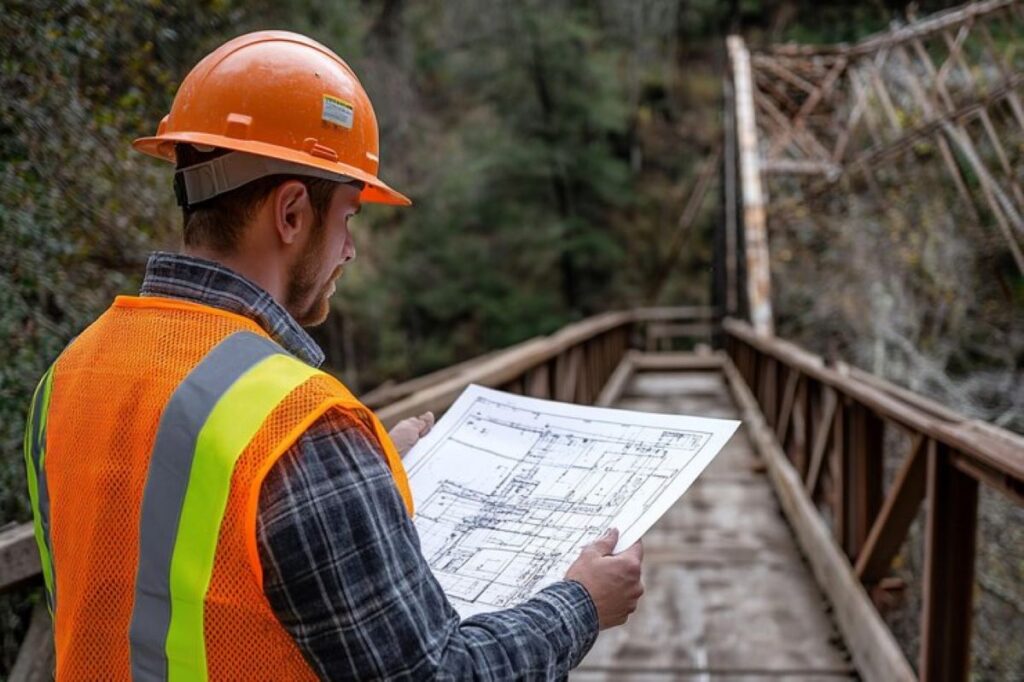In the realm of construction, precision and planning are paramount. One of the most crucial preliminary steps in any construction project is conducting a contour survey. This type of survey provides detailed information about the topography of a site, which is indispensable for architects, engineers, and builders. Understanding the lay of the land is not just about aesthetics; it is about ensuring safety, efficiency, and cost-effectiveness. A contour survey serves as the foundation upon which successful construction projects are built.
Understanding Contour Surveys
What is a Contour Survey?
A contour survey, also known as a topographic survey, involves mapping the surface features of a plot of land. This includes the natural and man-made features such as hills, valleys, trees, buildings, and roads. The primary focus is on the elevation and the contours of the land, which are represented as lines on a map. These lines indicate the height above a baseline, usually sea level, and help in visualising the slope and relief of the terrain.
The data collected during a contour survey is crucial for understanding how water flows across the site, which can influence drainage plans and the placement of structures. This information is typically gathered using advanced surveying equipment such as theodolites, GPS, and drones, which ensure accuracy and detail.
Contour surveys are not only essential for large-scale construction projects but also for smaller developments. Whether it is a residential building, a commercial complex, or an infrastructure project, knowing the topography is vital for making informed decisions.
The Role of Contour Surveys in Construction
Contour surveys play a pivotal role in the planning and design phases of construction projects. By providing a detailed map of the land’s topography, these surveys help architects and engineers design structures that are well-suited to the natural landscape. This can lead to more aesthetically pleasing and environmentally friendly developments.
Moreover, understanding the contours of a site can help in identifying potential challenges such as steep slopes or areas prone to flooding. By addressing these issues early in the planning process, developers can avoid costly modifications and delays during construction. This proactive approach not only saves money but also ensures the safety and stability of the structures being built.
In addition to aiding in design and planning, contour surveys are also used to assess the feasibility of a project. By analysing the topography, developers can determine whether a site is suitable for the intended construction and make necessary adjustments to the project plan.
Benefits of Conducting a Contour Survey
Enhancing Design and Planning
One of the primary benefits of a contour survey is the enhancement it brings to the design and planning stages of a construction project. With accurate topographical data, architects and engineers can create designs that integrate seamlessly with the natural environment. This not only improves the aesthetic appeal of the project but also ensures that the design is practical and sustainable.
Furthermore, detailed contour maps allow for precise calculations of cut and fill volumes, which are essential for earthworks. By knowing exactly how much earth needs to be moved, construction teams can plan more efficiently, reducing waste and minimising environmental impact.
Contour surveys also facilitate the optimal placement of structures, roads, and utilities. By understanding the natural flow of the land, planners can design layouts that maximise space and functionality while minimising disruption to the environment.

Mitigating Risks and Reducing Costs
Conducting a contour survey early in the project lifecycle helps in identifying potential risks associated with the site. For instance, areas with steep slopes may require additional stabilisation measures, while low-lying areas might need enhanced drainage solutions. By recognising these challenges upfront, developers can incorporate necessary precautions into the design, reducing the likelihood of costly issues arising during construction.
Additionally, accurate topographical data can lead to significant cost savings. By understanding the terrain, construction teams can avoid unnecessary excavation and grading, which can be both time-consuming and expensive. This efficiency translates into reduced labour costs and shorter project timelines.
Moreover, a well-conducted contour survey can prevent legal disputes related to land boundaries and property lines, ensuring that the project proceeds smoothly without any legal hindrances.
Ensuring Compliance and Safety
Compliance with local building regulations and safety standards is a critical aspect of any construction project. Contour surveys provide the necessary data to ensure that the project adheres to these regulations. By understanding the topography, developers can design structures that are safe and stable, reducing the risk of accidents and structural failures.
Furthermore, contour surveys help in planning for natural disasters such as floods and landslides. By analysing the elevation and slope of the land, developers can implement measures to mitigate these risks, ensuring the safety of the structures and their occupants.
In addition to safety, contour surveys also play a role in environmental compliance. By understanding the natural features of the site, developers can minimise the impact of construction on the environment, preserving natural habitats and ecosystems. Learn more about the role of a cadastral surveyor in defining property boundaries.
How to Conduct a Contour Survey
Choosing the Right Equipment
Conducting a contour survey requires the use of specialised equipment to ensure accuracy and precision. Traditional tools such as theodolites and levels are still widely used, but modern technology has introduced more advanced options. GPS systems and drones equipped with LiDAR (Light Detection and Ranging) technology are increasingly popular for their ability to quickly and accurately map large areas.
The choice of equipment depends on the size and complexity of the site, as well as the level of detail required. For smaller projects, traditional methods may suffice, while larger or more complex sites may benefit from the use of advanced technology.
Regardless of the equipment used, it is essential to ensure that it is calibrated correctly and operated by trained professionals to guarantee the accuracy of the survey data.
Steps in Conducting a Contour Survey
The process of conducting a contour survey typically involves several key steps. The first step is to establish a baseline or reference point, which serves as the starting point for all measurements. This is usually done using a known elevation point or a benchmark.
Next, the surveyor systematically collects data across the site, recording the elevation at various points. This data is then used to create a contour map, which visually represents the topography of the land. The contour lines on the map indicate areas of equal elevation, allowing for easy interpretation of the terrain.
Once the data is collected and the map is created, it is analysed to identify any potential issues or areas of concern. This analysis is crucial for informing the design and planning stages of the construction project.

Interpreting the Results
Interpreting the results of a contour survey requires a keen understanding of topographical maps and the ability to translate this information into practical applications. Architects and engineers use these maps to make informed decisions about the design and layout of the project, ensuring that it is both functional and aesthetically pleasing.
The contour map provides valuable insights into the natural drainage patterns of the site, which can influence the placement of structures and the design of drainage systems. By understanding how water flows across the land, developers can implement measures to prevent flooding and erosion, protecting the integrity of the project.
Additionally, the contour map can help identify areas of the site that may require additional attention, such as steep slopes or unstable ground. By addressing these issues early in the planning process, developers can avoid costly modifications and ensure the safety and stability of the construction.
Conclusion
A contour survey is an indispensable tool in the construction industry, providing the detailed topographical information necessary for successful project planning and execution. By enhancing design and planning, mitigating risks, reducing costs, and ensuring compliance and safety, contour surveys lay the groundwork for efficient and effective construction projects. As technology continues to advance, the accuracy and efficiency of contour surveys will only improve, further solidifying their role as a cornerstone of modern construction practices.

